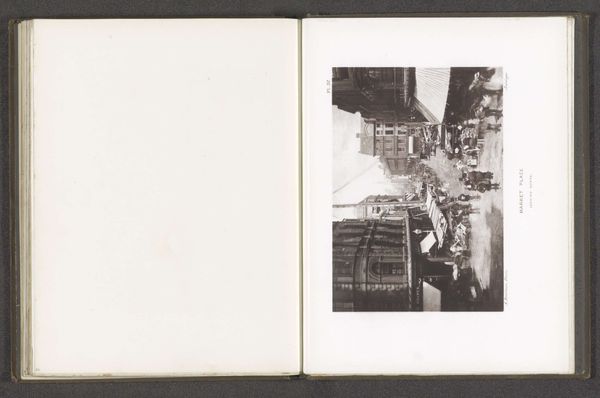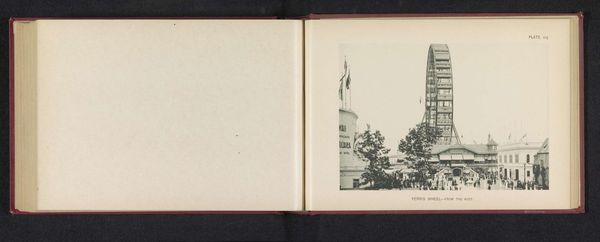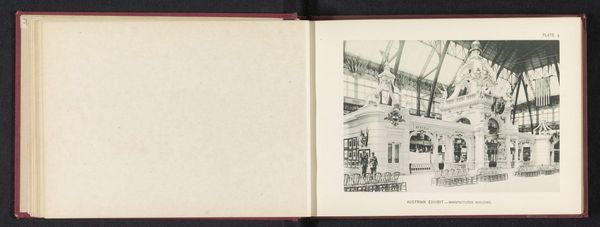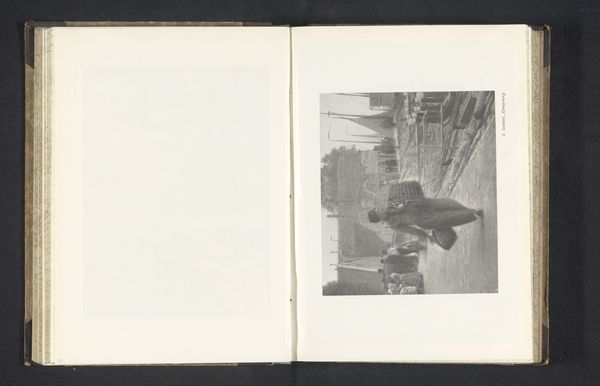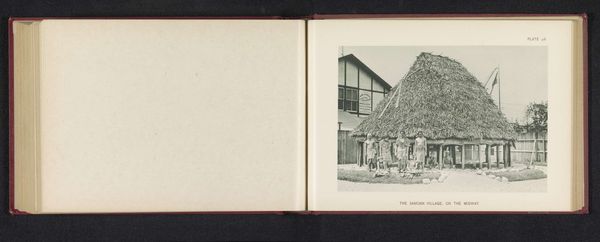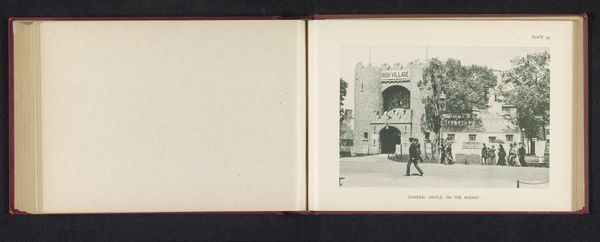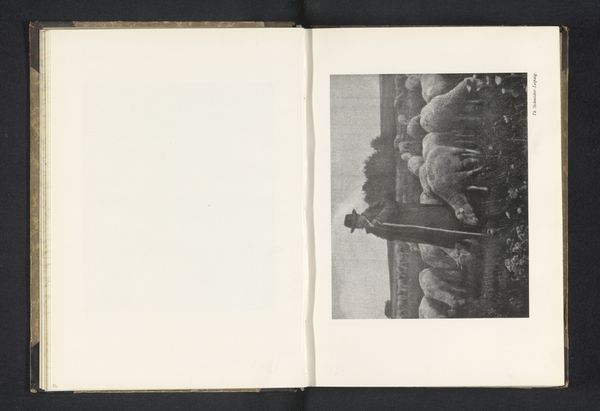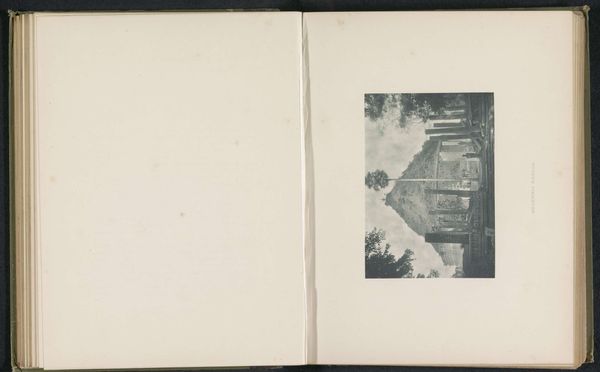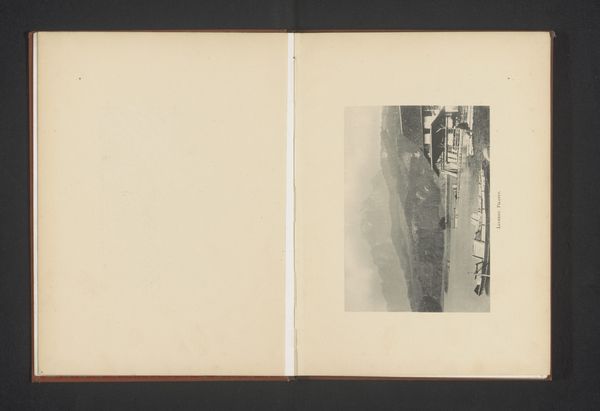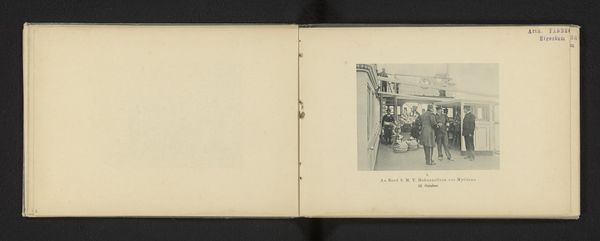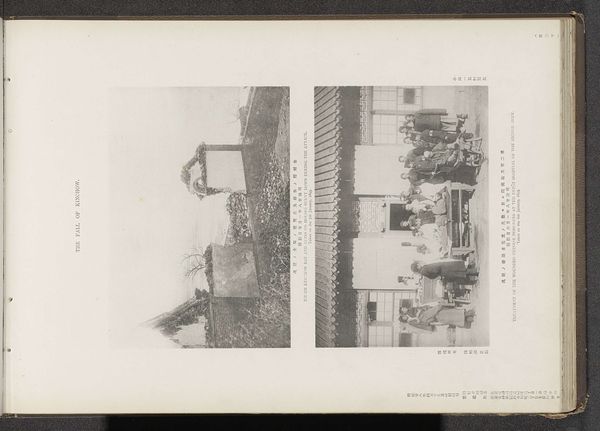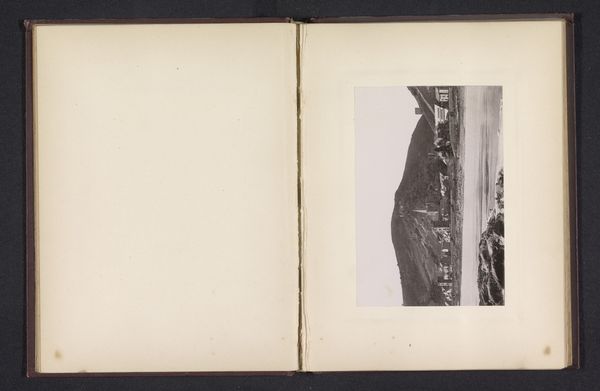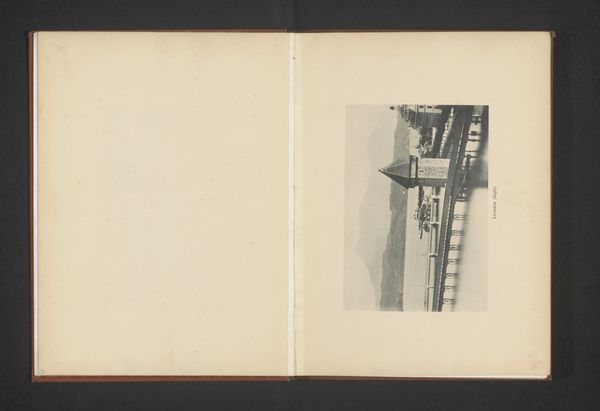
Ingang van een nagebouwd Duits dorp de World's Columbian Exposition in Chicago in 1893 1893
0:00
0:00
print, photography, gelatin-silver-print
# print
#
landscape
#
photography
#
coloured pencil
#
orientalism
#
gelatin-silver-print
#
cityscape
Dimensions: height 133 mm, width 191 mm
Copyright: Rijks Museum: Open Domain
Editor: This is a photograph by Charles Dudley Arnold, taken in 1893, titled "Entrance to a Reconstructed German Village at the World's Columbian Exposition in Chicago." It has an interesting mix of grand architecture and everyday life captured in a gelatin-silver print. What do you see in this piece? Curator: This image is more than just a historical record. It captures a crucial moment of cultural representation and the power dynamics inherent in these world expositions. The reconstructed German village wasn't simply a display of German culture, but a constructed, often romanticized, version presented for the consumption of an American audience. Think about who was doing the constructing and whose narrative was being privileged. Editor: That’s interesting. It hadn't occurred to me that it was presenting a constructed view. How does this relate to today’s cultural narratives? Curator: It prompts us to question the authenticity of cultural representations in any setting. Who has the authority to define and display culture? And whose voices are marginalized in that process? It is an important study in the ways identities were and still are negotiated, particularly in a globalized world. Editor: So the photograph, in a way, freezes a moment of cultural exchange that’s loaded with historical and social context? Curator: Exactly! By acknowledging the politics of representation embedded within these seemingly innocent displays, we can become more critical viewers of the cultural narratives surrounding us. It reminds us that history isn't a neutral record, but a product of selective storytelling. Editor: Thank you. This has given me so much to consider beyond just the aesthetic qualities of the photograph. Curator: It has allowed us to investigate how photographs from the past shape present-day understanding, hasn't it?
Comments
No comments
Be the first to comment and join the conversation on the ultimate creative platform.
